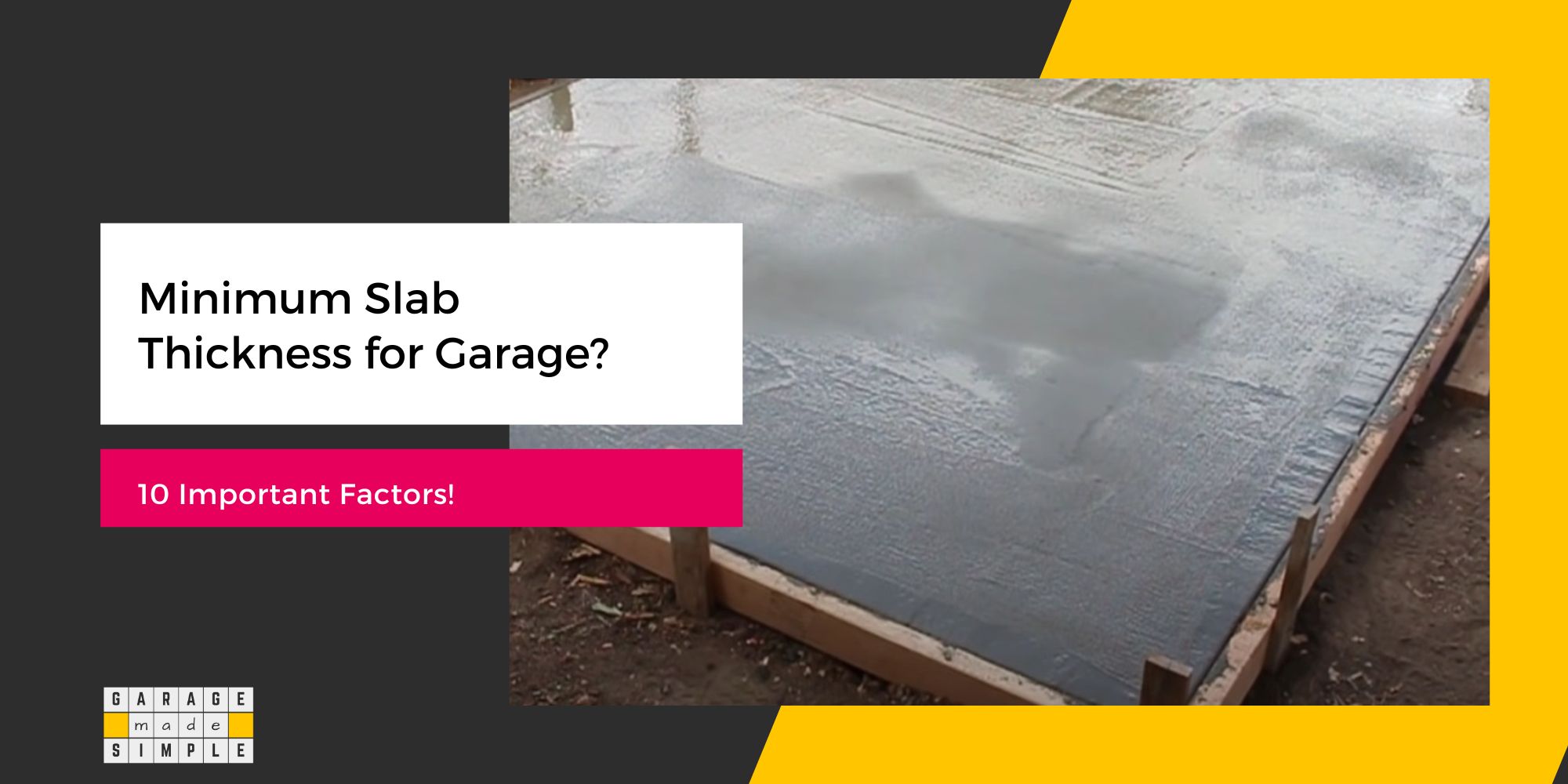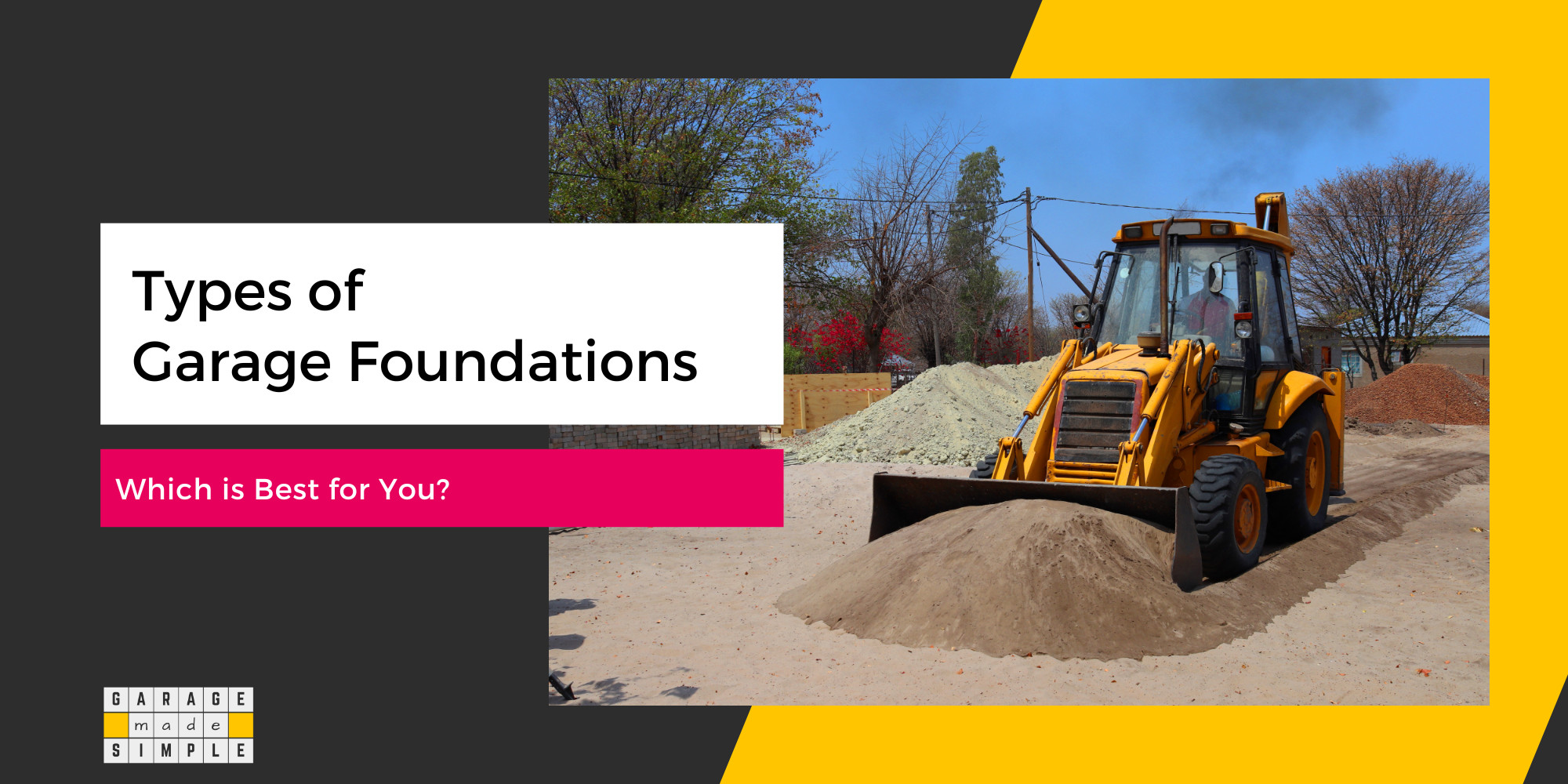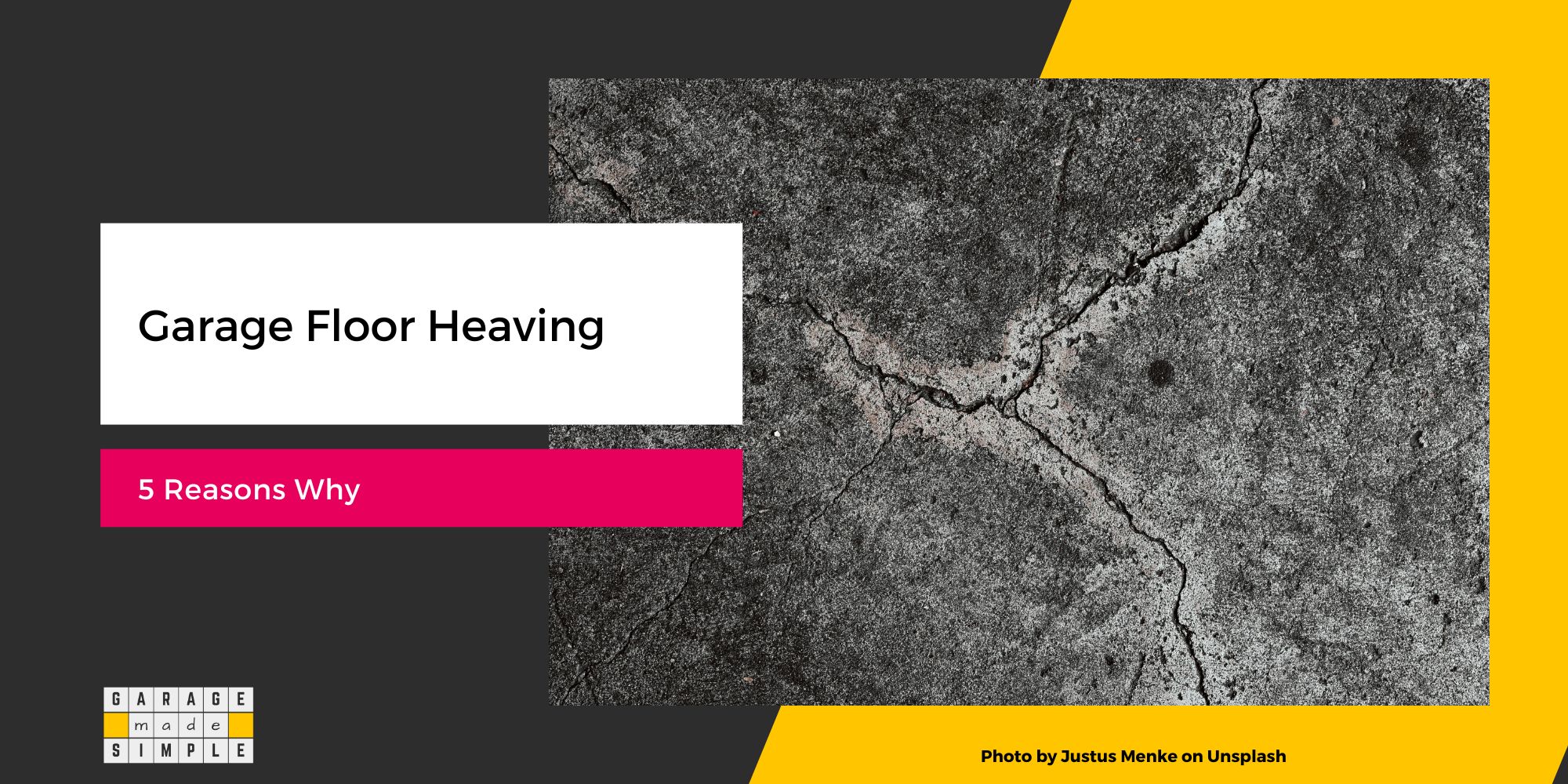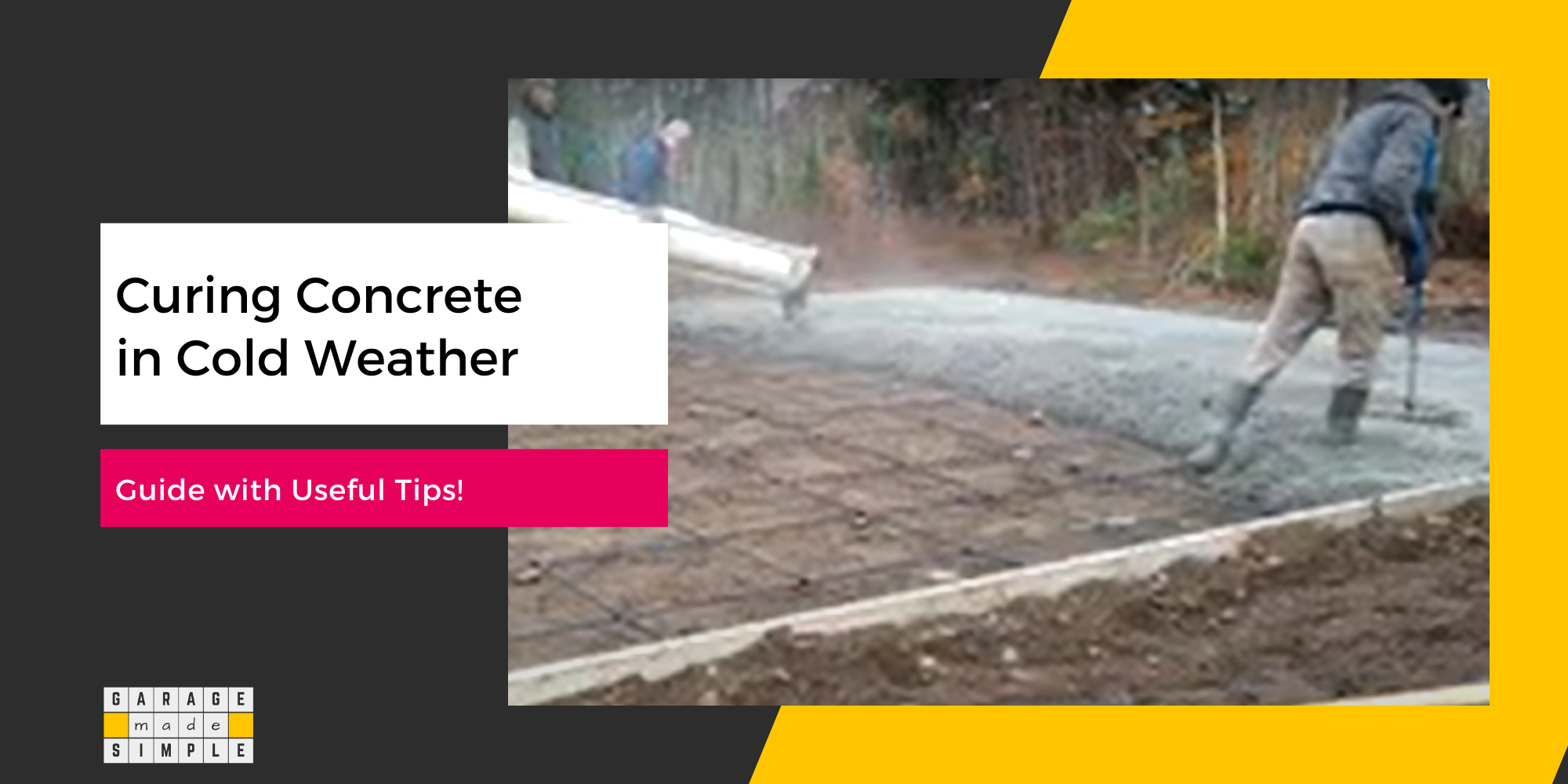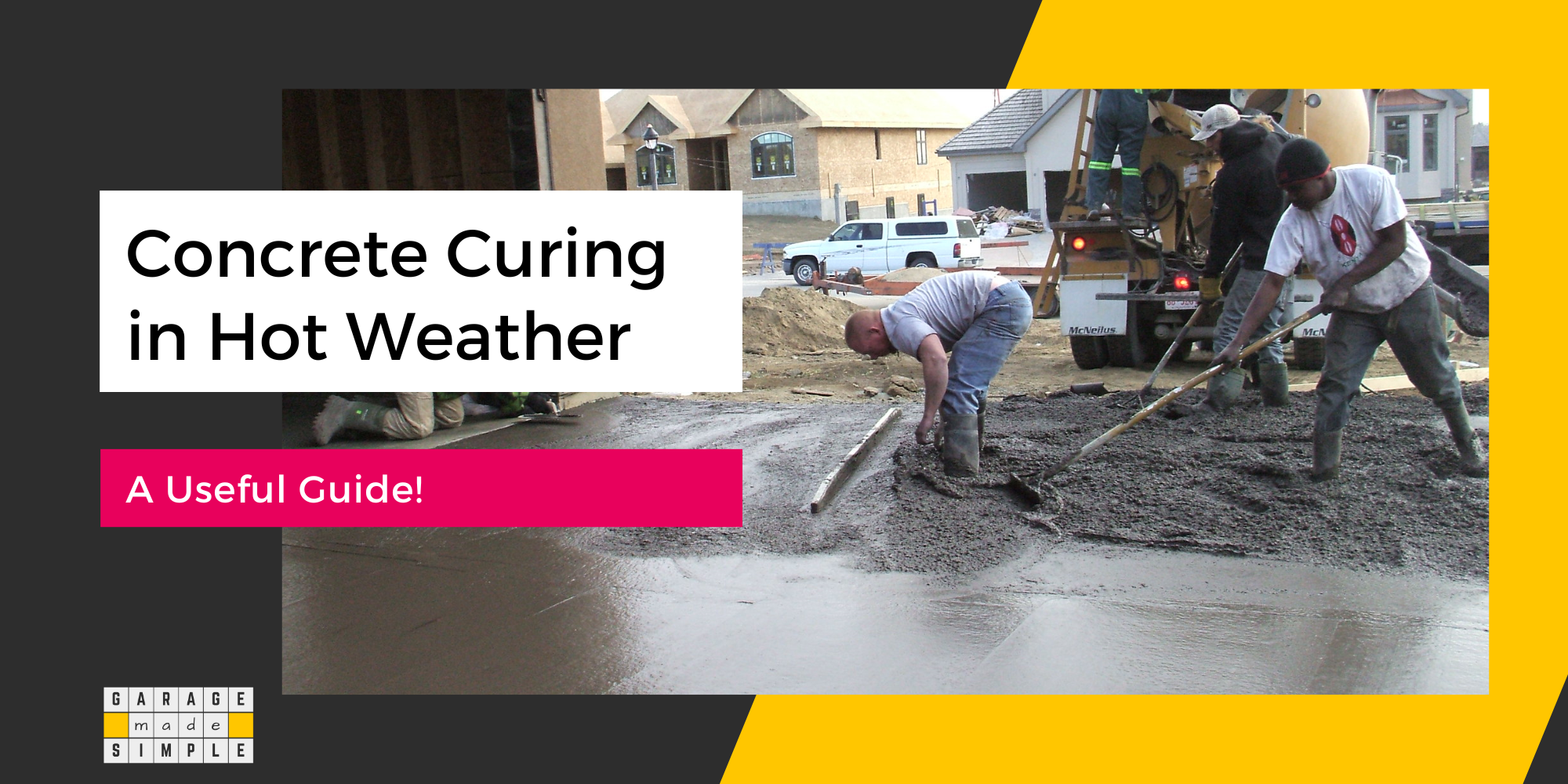Why is Concrete Curing Process Important for a New Garage Slab?
As an Amazon Associate, I earn from qualifying purchases.
What Exactly Is the Concrete Curing Process?
Pouring of the concrete slab for the garage floor is just the beginning. The concrete curing process, when done right, is what is going to impart the desired strength.
The concrete curing process typically takes 4 weeks. Only after this can you seal and coat the garage slab so that it is ready for use. Why? Because the concrete curing process must be completed. So what exactly is the concrete curing process?
The Concrete Curing Process is a chemical reaction between water and Portland cement called “hydration”. During the concrete curing process water and cement react to form a web-like crystalline structure that encapsulates the aggregates to give concrete its strength.
The hydration reaction begins as soon as water is added to the cement & aggregate mix and never really ends. However, generally concrete is said to have fully cured 28 days after pouring, as it achieves 90% of its ultimate strength.
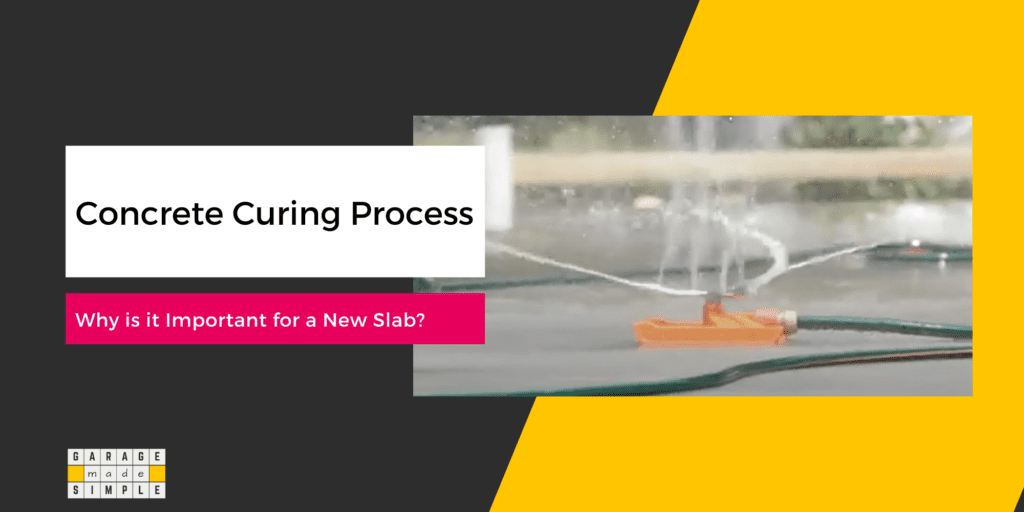
What Does Curing Do to Concrete?
During the concrete curing process, water in the concrete reacts with existing compounds in cement to form new compounds. These new compounds give concrete its strength and durability.
The curing process is essential for the concrete to reach its desired strength, and it must be done properly to ensure that the concrete will last for a long time.
The concrete garage floor slab must cure properly to:
- Ensure that the concrete reaches close to its full strength and durability.
- Minimize shrinkage cracks caused by rapid loss of moisture from the concrete.
- Help prevent dusting and scaling on the surface of the concrete.
- Reduce permeability of the concrete, making it more resistant to water and chemical attack.
The concrete curing process is essential to a good looking, strong & durable garage floor. So make sure it is done correctly & properly.
How Long Does the Concrete Curing Process Take?
As a rule of thumb a concrete slab on grade is considered to have fully cured in 28 days. However, the actual time can vary on curing conditions, especially ambient humidity and temperature.
Curing time is the time required for concrete to hydrate and harden to 90% of its full potential strength. The hydration reaction starts when water is added to the cement-aggregate mix and never really ends.
Concrete gains strength rapidly as crystals begin to form. However, the rate of strength gain slows down over time. Here is an example of a table that shows the approximate percentage of strength development over time for concrete:
| Days | % Strength Development |
| 1 | 10-20% |
| 3 | 30-40% |
| 7 | 75% |
| 14 | 85% |
| 28 | 90% |
| 60 | 95% |
| 90 | >99% |
Effect of Humidity on Concrete Curing Time
Ambient humidity has an inverse relationship with water evaporation rate. Higher the humidity, lower is the evaporation rate of water from concrete. The water evaporation rate affects the amount of water available to the cement in the concrete for hydration.
Humidity levels must be controlled so that the water-cement ratio in the concrete is maintained at optimal levels throughout the concrete curing process.
If the humidity is too low, the concrete will dry out too quickly. This will lead to higher shrinkage cracks and a weaker concrete slab. On the other hand, if the humidity is too high, it will slow down the concrete curing process.
Effect of Temperature on Concrete Curing Time
Chemical reactions slow down at lower temperatures as molecules are less active due to lower energy. Therefore, at lower temperature the hydration reaction slows down and the concrete takes longer to reach its full strength.
At very low temperatures, not only does curing time increase, concrete may not cure properly, resulting in a weak concrete slab. On the other hand higher temperatures can lower the concrete curing time because it speeds up hydration.
However, higher than recommended temperatures can result in other problems. The water in the concrete mix can evaporate too quickly and result in shrinkage cracks, dusting and poor bond development between concrete and rebars.
Optimal Curing Conditions
For optimal curing time and maximum concrete slab strength, maintain the following concrete curing conditions :
- Relative Humidity (RH) should be kept between 50% and 75%.
- Concrete temperature should be maintained in the 50 – 90 degrees Fahrenheit range.
- Temperature should not fluctuate more than 20 degrees in a 24 hour period.
How Do You Cure a Concrete Slab After Pouring?
You need to control the concrete curing process for the first 7 days and start as soon as the concrete has set. With proper curing the concrete slab will achieve 70% of its potential strength in this period.
During the concrete curing process, the concrete slab should be kept moist and cool so that the rate of water evaporation is optimal.
A concrete slab is considered as fully cured when it achieves a strength of 90% or more of its potential strength. Typically this takes 28 days.
There are 3 practical ways in which a concrete slab on grade for a new garage can be cured.
1. Water Curing
Water Curing: In this method water evaporation is controlled by replenishing the evaporated water. Water curing is relatively easy and the most traditional method for curing concrete slabs. Of course, it is labor intensive and requires an ample supply of water.
In wet curing of concrete the concrete surface is kept wet or moist by
- Ponding: A shallow pond of water is made on the concrete surface. The water in the pond is replenished regularly to ensure that a minimum water depth is maintained.
- Misting: The concrete surface is sprayed with water at regular intervals. It is important to ensure that the concrete remains wet at all times.
- Burlap Covering: Misting is still involved but the concrete surface is also covered with burlap. The burlap covering helps retain the water for longer. Canvas, sand, straw are some of the alternative materials to burlap that may also be used.
2. Membrane Curing
Membrane Curing: In this method water evaporation is controlled by retaining it within a water non-permeable membrane. The membrane is spread over the slab surface and taped to the edges.
Any moisture released by the concrete, during the curing process, is retained within the membrane. As such the concrete remains moist at all times and water evaporation is eliminated.
Membrane curing reduces the need for labor and water, significantly.
3. Chemical Curing
Chemical Curing: This method involves applying a curing compound, typically a liquid wax or membrane-forming compound, to the surface of the concrete to prevent moisture loss.
The curing compound forms a barrier that slows the evaporation of water from the concrete surface. This method is especially suited to large surface areas as it does not require as much labor or water.
However, the curing compound must be applied evenly and in the correct amount to be effective.
Concerned about the concrete curing process in extreme weather conditions? Then you need to check out:
and
Thank you very much for reading the post. I do hope you found it informative and useful.

